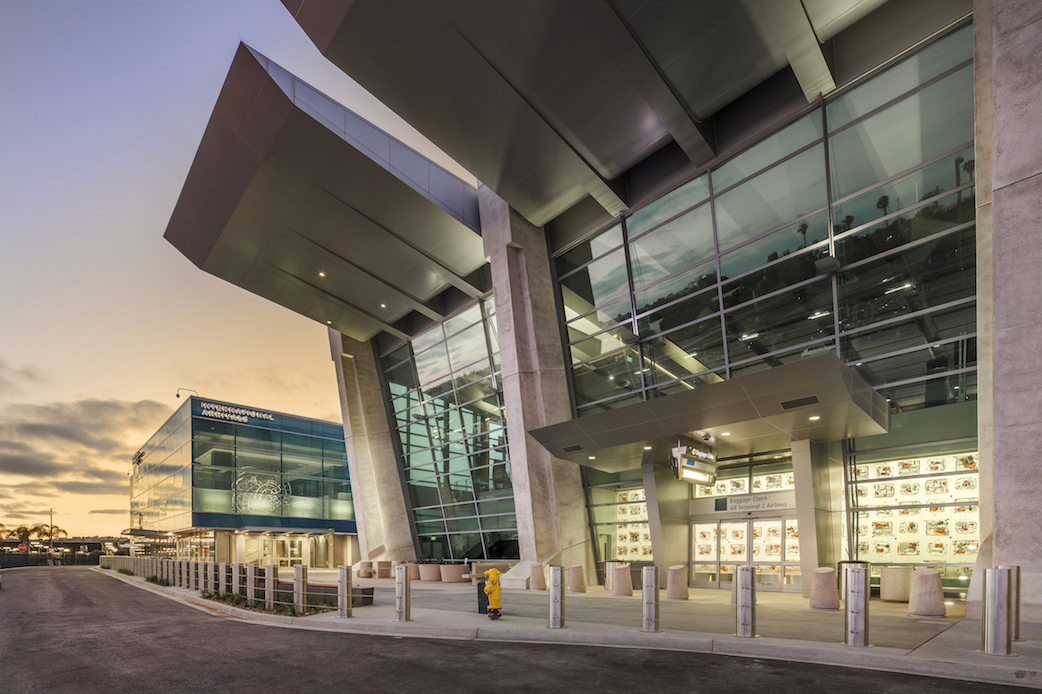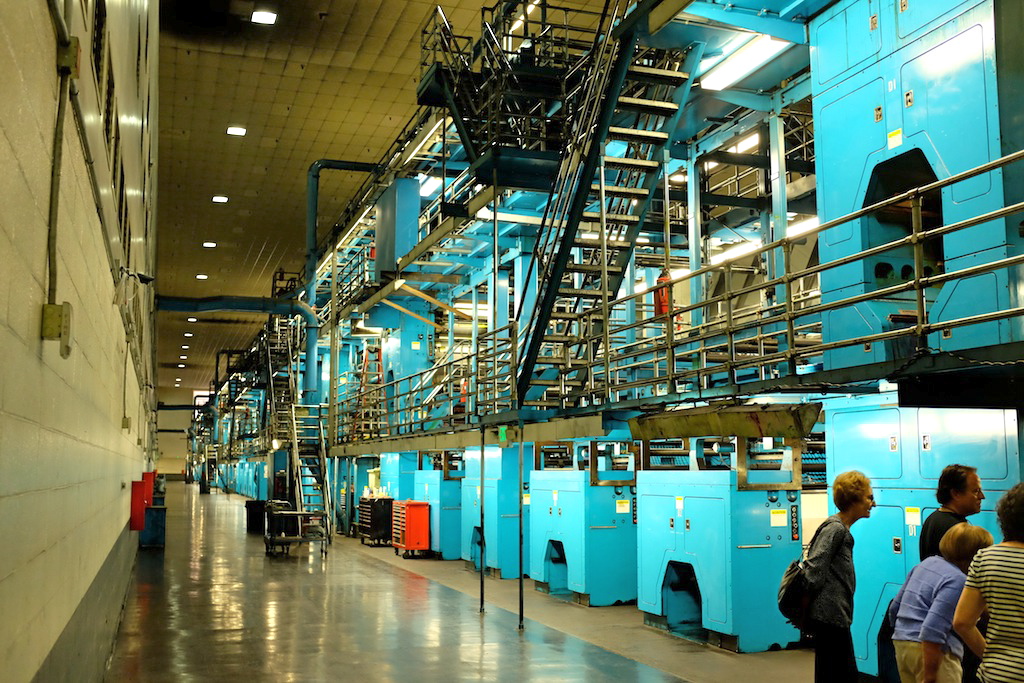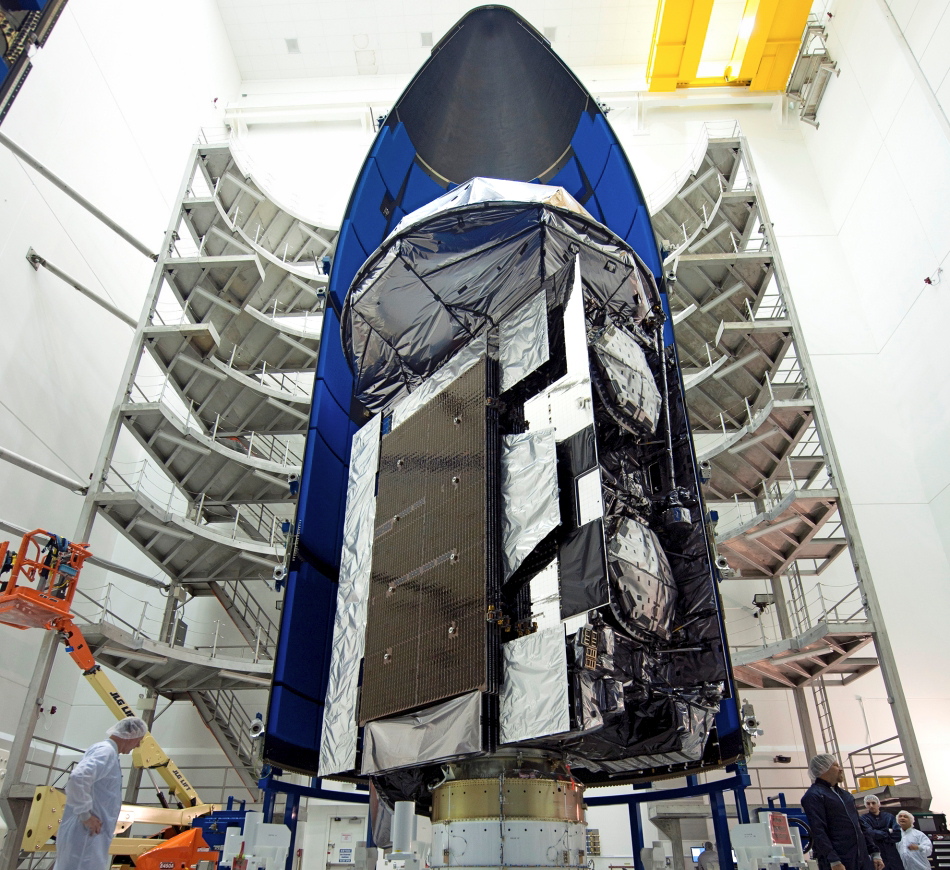Daily Business Report-June 29, 2018
International Arrivals Facility. (Photo by Pablo Mason, courtesy of San Diego International Airport)
$229M International Arrivals
facility to open Saturday at
San Diego International Airport
The San Diego County Regional Airport Authority, along with officials from U.S. Customs and Border Protection and Turner|PCL Joint Venture, marked the completion Thursday of a new 130,000-square-foot International Arrivals facility at San Diego International Airport’s Terminal 2. The new facility will allow the airport to accommodate the increase in international passengers resulting from recently added overseas flights. It opens Saturday.
The total cost of the project is estimated at $229.4 million. The new facility will serve British Airways, Edelweiss Air, Japan Airlines, Lufthansa, Alaska Airlines, Southwest Airlines and Spirit Airlines.
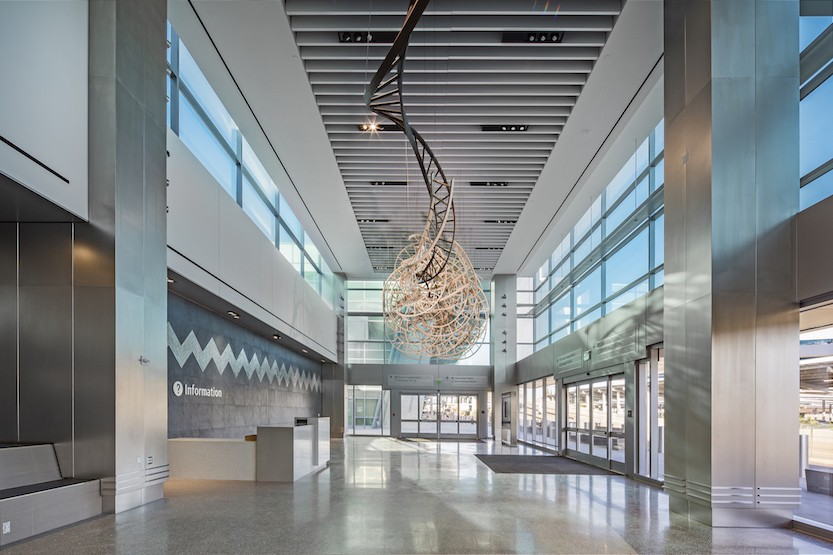
The airport has experienced significant growth in international arrivals in the past quarter-century – from about 50,000 passengers a year in the early 1990s to more than 400,000 a year in 2017. That number – and the associated economic impact — will continue to grow as more international nonstop flights are added.
The new facility improves the processing experience for passengers with reduced wait times and a more welcoming environment. It features the newest technologies from U.S. Customs and Border Protection.
“We are one of the first in the nation to implement 100 percent biometric or facial recognition technology for arriving international flights,” said Deputy Director of Field Operations for San Diego, Anne Maricich. “Not only will this simplify the arrival process, it is a critical step in our national security mission.”
At 130,000 square feet, the new facility is five times larger than the previous facility. It also increases the number of international gates at the airport from three to six.
_______________
USD Economic Index
records second straight loss
The USD Burnham-Moores Center for Real Estate’s Index of Leading Economic Indicators for San Diego County fell 0.2 percent in May. The biggest contributor to the drop was a big decrease in online help wanted advertising. Initial claims for unemployment insurance were also moderately negative while there was a small decline in residential units authorized by building permits. On the positive side, local stock prices were up moderately, but consumer confidence and the outlook for the national economy were up only slightly. Although the number of components up and those down were even at three apiece, the negatives outweighed the positives to push the USD Index to its second straight loss.
Economists usually look for three moves in the same direction for a leading index to indicate a turning point in the economy. This hasn’t happened yet, so the outlook for the local economy remains positive for now. But any number of things could adversely affect San Diego’s economy, including rising gas prices, rising interest rates, high housing prices making it difficult for companies to attract and retain workers.
_______________
Tribal casinos’ gaming revenues
climbed nearly 4 percent last year
The Day
Native American casinos generated $32.4 billion in gross gaming revenue in fiscal 2017, a 3.9 percent increase over the previous year and the seventh straight year-over-year increase, the National Indian Gaming Commission announced. San Diego County is home to 18 Indian tribes, the largest concentration of any county in the United States. Eleven of the tribes have gaming operations.
The commission compiled data from the independently audited financial statements of 494 gaming operations owned by 242 federally recognized tribes.
“All of Indian Country has worked very hard to maintain a flourishing and constantly growing gaming industry,” Jonodev O. Chaudhuri, the commission chairman, said in a statement.
_______________
Clinical lab scientist students receive
stipend from Melissa Dull Fund
As a former clinical laboratory scientist student, Melissa Dull knew she wanted to financially help other students achieve their goals in pursuing careers in the medical technologist and laboratory fields. And, before her death in 2017, she donated $100,000 to the UC San Diego Extension Clinical Laboratory Scientist Program. For the second year in a row, her donation has provided a $1,500 stipend to 15 students of the UC San Diego Extension CLS Training Program.
At a May 30 reception, Mary Walshok, dean of UC San Diego Extension, and Dull’s long-time friend and CLS program coordinator, Barbara Sevilla, distributed checks to 15 students who demonstrated success in the first six months of this year’s CLS program.
Dull retired in 2016 and established the Melissa Dull Current Use Fund for CLS Program Support to encourage future clinical laboratory scientists in the profession she loved.
_______________
Mission payloads tested on
General Atomics’ surrogate aircraft
General Atomics Aeronautical Systems Inc. said it has successfully flown its MQ-25A surrogate aircraft — a Predator C Avenger — outfitted with a representative set of mission payloads, including Electro-optical/Infrared, Electronic Support Measures, Automatic Identification System, and Mission Processing. MQ-25 is the U.S. Navy’s unmanned aerial refueling aircraft program.
During the flight, the MQ-25A surrogate’s payloads were remotely commanded by General Atomics’ extensible payload command and control system. The team will leverage this software to enhance the Navy’s Unmanned Carrier Aviation Mission Control System. Between flights, the company re-configured the Unmanned Aerial System with different payloads to demonstrate the system’s modular design and the benefits of an open architecture solution.
_______________

Model townhomes at Ramona’s
Paseo Village set for grand opening
In a partnership with San Diego-based D.K. Realty Holdings LLC, Pathfinder Partners LLC is nearing completion of model townhomes in downtown Ramona’s newest multifamily community. It is finalizing construction on the model units at Paseo Village Townhomes for a July 14 grand opening. Three fully furnished models will be shown from 11 a.m. to 4 p.m.
The new, 31-unit, nine-building luxury development is at Day and La Brea streets. San Diego-based Pathfinder acquired the 2.5-acre parcel – complete with approved architectural plans – in late 2016. The remaining units in the community will be completed this fall.
Paseo Village’s three-bedroom, two-and-a-half-bath, Craftsman-style homes – each with a two-car, direct-access garage – are 1,577 to 1,632 square feet. Prices start in the 400,000s.
_______________
San Diego Regional Chamber extends
CEO Jerry Sanders’ contract 2 years
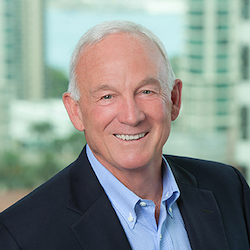
The San Diego Regional Chamber of Commerce has extended the contract of President and CEO Jerry Sanders to 2022. His current contract was set to expire at the end of 2020.
“Since day one Jerry has had a positive impact on the chamber and has been the driving force behind the chamber’s growth and effectiveness,” said Sam Attisha, chamber board chair and senior vice president and region manager of Cox Communications.
Sanders was appointed chamber president and CEO the day after he left the mayor’s office in 2012. Before him the president/CEO was Ruben Barrales.
Sanders commented: “I am extremely proud of the strides we have made in establishing the chamber as a strong, effective voice for the business community and I look forward to building on that progress. The chamber is committed as ever to providing the resources that help all businesses grow and thrive and advocating for the policies and leaders that make San Diego a great place to do business.”
_______________
Jewish Family Service leads plan
to secure funding for Holocaust survivors
The State of California appropriated $3.6 million to create the California Holocaust Survivor Assistance Program, the first California-funded program that ensures that Holocaust survivors are able to live out their lives with dignity. The proposal for the program was initiated and stewarded by Jewish Family Service of San Diego, in partnership with the Jewish Public Affairs Committee of California.
The money will be used to fund and supplement services including home care, case management, home-delivered meals, transportation and emergency financial assistance for approximately 600 additional elderly Holocaust survivors throughout California who are currently underserved by existing resources.
_______________
Chauntry brings parking reservations
technology to San Diego Int’l Airport
Parking just become easier and more convenient at San Diego International Airport with the introduction of Chauntry’s pioneering parking reservations platform. The Chauntry reservations platform allows travelers to reserve and pay for parking before traveling to the airport, eliminating the uncertainty that travelers often experience when looking for parking close to their terminals.
San Diego International Airport becomes the first airport in the United States to offer travelers Chauntry’s Parkspace v. 18, an advanced parking reservations platform. The platform allows travelers to reserve and pay for a space in the parking facility that is closest to their terminal. After pre-booking the traveler is issued a barcode, which can be printed or sent to a smart device for use when entering and exiting the garage. Frequent travelers are also able to create a user account, which includes personal and payment information, to provide a quicker and more convenient pre-booking experience when traveling in the future. The user interface allows quick and seamless integration into the Chauntry platform, and parkers can use it on any device.
_______________
Carnival Cruise Line to return to
Port of San Diego in late 2019
Carnival Cruise Line announced Thursday that it will return to the Port of San Diego for the first time in seven years when Carnival Miracle arrives in late 2019. Carnival Miracle will operate a winter schedule of three- to 15-day voyages from San Diego from December 2019 to February 2020.
The schedule kicks off with a seven-day cruise to the Mexican Riviera departing Dec. 1, 2019, and also includes two longer-length Carnival Journeys voyages — 14- and 15-day Hawaii adventures visiting popular destinations throughout the Aloha State departing Dec. 8, 2019 and Jan. 17, 2020, respectively.
Carnival Miracle’s San Diego-based program also includes two five-day voyages that spend two days in Cabo San Lucas departing Dec. 22, 2019 and Jan. 12, 2020, along with two three-day getaways visiting Ensenada Dec. 27, 2019 and Jan. 3, 2020. There’s also a special four-day New Year’s Baja Mexico cruise departing Dec. 30, 2019, as well as a six-day cruise that includes two days in Cabo San Lucas and a day-long visit to Ensenada departing Jan. 6, 2020.
The schedule concludes with a 13-day Panama Canal Carnival Journeys cruise that departs San Diego Feb. 1 and arrives in Miami Feb. 14, 2020.
_______________
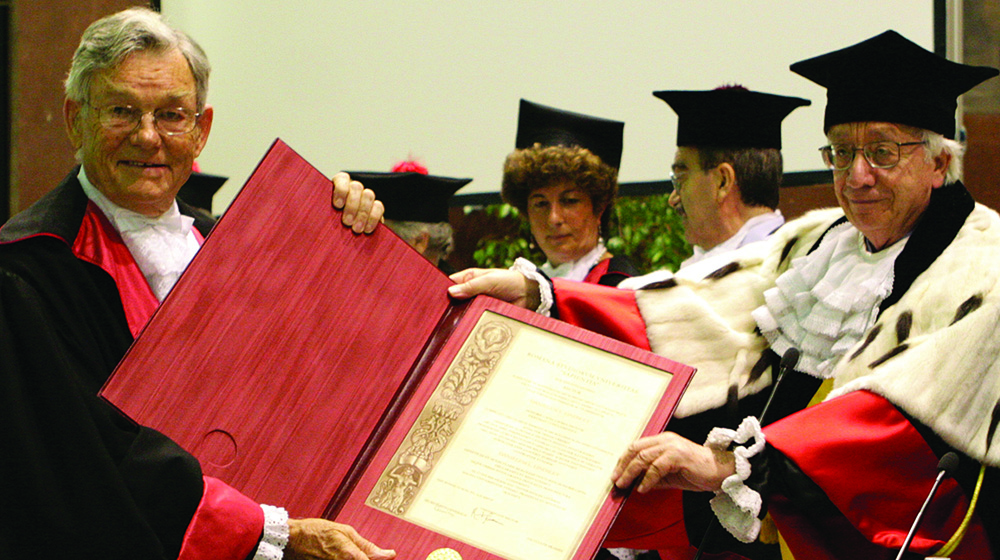
In Memoriam: Dan Lindsley, 1925-2018
Dan Lindsley, a founding biology faculty member at UC San Diego and a renowned leader in fruit fly genetics, died of natural causes on June 22, 2018, at his home in La Jolla. He was 92.
A member of the National Academy of Sciences, Lindsley arrived at UC San Diego in 1967 and helped build the fledgling Department of Biology into a global leader in molecular and cell biology. The year after arriving at UC San Diego, Lindsley, with Ed Grell, published “Genetic Variations in Drosophila melanogaster,” a seminal book described as the encyclopedia of mutations and chromosome aberrations in the fruit fly.In 1992 he and Georgianna Zimm updated the information in his second acclaimed book, “The Genome of Drosophila melanogaster.”
“Dan was one of the preeminent Drosophila geneticists of the 20th century,” said Bill McGinnis, dean of the UC San Diego Division of Biological Sciences. “He published widely on genetics and developed the first comprehensive organismal genetic/genomic database. He was a sweet and generous man who will be sorely missed.”
The Lindsley family requests that donations are directed to the UC San Diego Biology Founding Faculty Graduate Award. Contact Allyson Aguero in the Biological Science’s dean’s office for more information (858) 822-4622.
_______________
Homelessness and Affordable Housing
bond measure returns to Rules Committee
The Rules Committee of the San Diego City Council will review language for the proposed Homelessness and Affordable Housing Bond Measure on Wednesday, July 11 at 2 pm on the 12th floor of City Hall (202 C Street, 92101). A fact sheet for the measure as well as proposed measure language are available here
The Homelessness and Affordable Housing Bond will provide funding for the chronically homeless on our streets to have a home. It will create a safety net of housing for seniors, veterans, and people living with disabilities. It will begin to build homes for the many low wage working households who struggle to find secure, affordable housing for their families.
_______________
Wholesale water rates kept in check for 2019
Wholesale water rates adopted Thursday by the San Diego County Water Authority Board of Directors include some of the smallest increases in the past 15 years due to successful litigation against the Los Angeles-based Metropolitan Water District of Southern California and strategic use of financial reserves, the agency said. They also highlight a historic shift in water costs: The Water Authority’s independent supplies from the 2003 Colorado River Quantification Settlement Agreement are now less expensive for the region than supplies from MWD, and that difference will grow in the years ahead.
On Jan. 1, 2019, rates charged to the Water Authority’s 24 member agencies will increase by 0.9 percent for treated water and 2.9 percent for untreated water. Key factors influencing the 2019 rates include regional water demand that’s expected to remain below earlier projections; increasing deliveries of independent and more reliable Colorado River water supplies from the Imperial Irrigation District; and lowered transportation costs from MWD because of a 2017 Court of Appeal ruling that favored the Water Authority on several key points.
_______________
Dimensions Construction awarded
$7.7 million Navy contract
Dimensions Construction Inc. in San Diego has been awarded a $7,689,264 contrat for the renovation of Bachelor Enlisted Quarters Building 150 at Naval Base Ventura County, San Nicolas Island. The work to be performed provides for repair and replacement of deteriorated flooring, walls, ceiling, doors, windows, soffits, and stairs. Work will also include upgrades to improve energy efficiency for heating, ventilation, and air conditioning, windows, toilets, faucets, and photovoltaic system. Work will be performed in Port Hueneme and is expected to be completed by December 2019. The Naval Facilities Engineering Command, Southwest, San Diego, is the contracting activity.
_______________
Personnel Announcements
Anne McClure new CEO at Cabrillo Credit Union
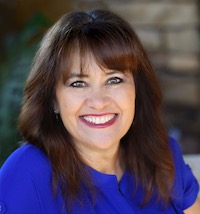
Anne McClure has been named the new chief executive officer of Cabrillo Credit Union. McClure was appointed interim CEO in May after working as the credit union’s chief operations officer. She succeeds Dean Odle.
Prior to her time as the COO, McClure was the senior vice president of human resources and compliance and was responsible for hiring, training and ensuring governmental compliance. She began her career with Cabrillo in 1992 as vice president of marketing and has worked in the banking industry since 1989.
As CEO, McClure will lead a staff of 70 employees and an executive staff of four. Cabrillo Credit Union has over 22,000 member-owners and serves them through a virtual branch, five branch locations in San Diego County and with Member Solution Agents. McClure holds a Bachelor of Arts degree in English from U.C. Irvine, is a graduate of the Western CUNA Management School, is a certified Enterprise Risk Manager and completed the CUNA Compliance School..
_______________
Sheriff Bill Gore appointed
to state corrections board
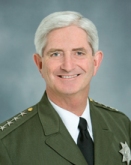
Sheriff Bill Gore, 70, has been appointed to the Board of State and Community Corrections by Gov. Jerry Brown. Gore has been sheriff of San Diego County since 2009, where he was undersheriff from 2005 to 2009 and assistant sheriff from 2004 to 2005. He was chief of investigations at the San Diego County District Attorney’s Office from 2003 to 2004 and served in several positions at the Federal Bureau of Investigation from 1970 to 2003, including assistant director, unit chief, special agent in charge and special agent. Gore served in the U.S. Navy from 1969 to 1970. He earned a Master of Public Administration degree from Seattle University. The position requires Senate confirmation and there is no compensation. Gore is a Republican.
_______________

Check-up: How health care fares
in California’s new spending plan
By Antoinette Siu | CALmatters
California has been a national leader in the effort to expand health care coverage, but some advocates say this year’s state budget marks a step backward in the quest to reduce and ultimately eliminate the number of uninsured people.
Gov. Jerry Brown on Wednesday signed a $201 billion spending plan that adds significant sums to the state’s rainy-day reserves, education and programs to aid affordable housing and homeless people.
But of the nearly $1.17 billion in new money that Democratic lawmakers sought to expand coverage, the final deal agreed to by Brown contains just $65 million specifically aimed at making premiums more affordable or addressing the millions of Californians who still have no health insurance at all.
“There’s no way to sugar coat this: There was no new investment to help Californians access or afford health care,” said Anthony Wright, executive director of Health Access California, a consumer advocacy nonprofit that lobbies for single-payer and universal health care.
As the Republican-controlled U.S. Congress continues its push to dismantle the Affordable Care Act — known as Obamacare — health care advocates in the Golden State had hoped to get more state funding to offset policies coming from Washington, D.C.
The goal of Senate and Assembly Democrats was to bring the state as near as possible to universal coverage. To get there, they fashioned complementary bills aimed at covering different segments of California’s underinsured or uninsured populations.
Last year, the state Senate passed a $400 billion bill to create a government-run universal health care system. The Assembly balked and shelved the bill, noting that it failed to detail how to pay for a plan whose costs appeared to exceeded the entire state budget.
This year, a scaled-back Assembly Democrats wish list sought just under $1 billion to expand coverage, with some $500 million intended to help lower the premiums that consumers pay for health insurance through the state’s marketplace, Covered California.
The Assembly proposal also would have allocated $250 million in recurring annual spending to extend coverage so uninsured young adults between 19 and 25, including undocumented immigrants, would have coverage. And it would have increased spending for health and nutrition programs for low-income women and children, and expansion of healthcare access for disabled undocumented immigrants.
Of the roughly 2.8 million California residents who remain uninsured, about 58 percent are undocumented immigrants, according to Health Access California.
“If we want to get to a truly universal system, one of the key things to do is to expand Medi-Cal to undocumented immigrants,” Wright said.
The Senate’s proposal for expanding coverage totaled around $169 million this year, and sought to expand Medi-Cal access for more seniors and the disabled.
Currently, the aged and disabled program for Medi-Cal covers those with an income at 123 percent of the federal poverty level. Legislators sought to broaden coverage by raising that threshold to 138 percent and expanding eligibility to all adults. That would have provided Medi-Cal coverage to all individuals with annual incomes of $16,754 or less.
The Senate version also included $58 million to restore optional Medi-Cal benefits that were cut during lean years of the Great Recession. Dental and optical coverage have been restored as the state’s balance sheet improved but services like podiatry, speech therapy and audiology are still not offered.
But the Legislature’s proposals were seen as too ambitious by Gov. Brown, who has warned against misusing the state’s recent budget surpluses by piling on pricey programs that require large, ongoing spending commitments.
“Let’s not blow it now; we worked too hard for that,” Brown said of the surplus while announcing his 2018-19 budget proposal last month. In his final year as governor, he vowed to “try to leave the most responsible budget I can to the next governor.”
The result: big big-ticket programs for health care coverage were shelved in favor of smaller initiatives requiring one-time expenses.
What remains for the coming fiscal year are a pair of minor provisions aimed at maintaining momentum toward universal coverage—major decisions about expanding coverage are kicked down the road.
The biggest addition to the new budget allocates $60 million to create a database to track and analyze how much hospitals and other health care providers are charging individuals and insurers—like Cigna, Blue Shield and others—for services, medical devices and pharmaceuticals.
The information is aimed at reducing ambiguity about the potential price tag of an eventual universal coverage or single-payer insurance scheme. The database, expected to be up and running by 2023, aims to reduce ambiguity about the potential price of tag of universal coverage.
A provision co-sponsored by Democratic Assemblymen Jim Wood of Healdsburg, a dentist, and Joaquin Arambula of Fresno, an emergency room doctor, will provide $5 million for a committee that will study pathways to potential universal or single-payer care.
Wood said he was glad that the new budget contains “building blocks” and “a roadmap” for eventually bringing health care to all Californians but he expressed disappointment at the pace of the effort.
“Funding for making progress toward universal health care…is totally inadequate in this budget,” Wood said in a statement. “To achieve a unified, publicly financed health care system—it does not go nearly far enough.
“While this budget may provide some one-time funding to get the ball rolling, we will need a longer term commitment to get us where we need to be.”
________________

